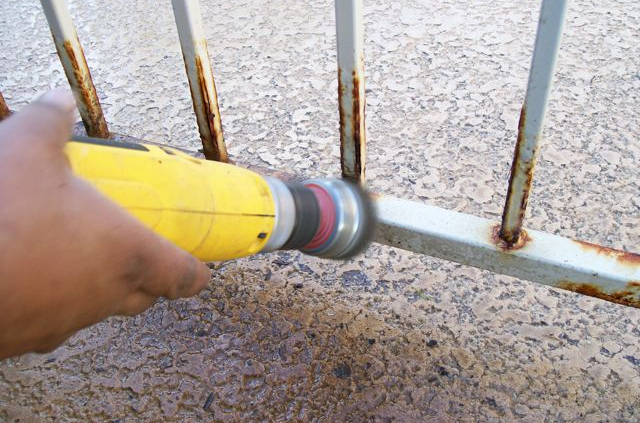Upgrading Your Old Pool Fence: What You Need to Know
If you have an older pool fence, it may not meet the current safety standards required by law in your state or region. Pool fencing is a vital safety measure that helps prevent accidental drownings, especially for children. Whether your fence has been in place for years or you’ve just moved into a property with an outdated pool barrier, upgrading your old pool fence is an essential step to ensure your pool area is compliant with modern safety regulations.
In this article, we’ll walk you through everything you need to know about upgrading your old pool fence, from understanding the legal requirements to choosing the right materials.
- Why Upgrade Your Pool Fence?
The primary reason to upgrade your old pool fence is safety. Older fences may not meet the current legal standards or may have been damaged over time, posing potential hazards. Pool safety is a top priority, and a secure, properly maintained fence is one of the most important elements in protecting your family and guests from pool-related accidents.
Aside from safety, upgrading your pool fence can also increase the aesthetic appeal of your pool area, improve property value, and ensure your pool area remains compliant with local laws, which can help you avoid fines or other legal issues.
- Understand Local Pool Fence Regulations
Before you begin the process of upgrading your pool fence, it’s essential to familiarize yourself with the local pool safety regulations in your area. These regulations set the standards for fence height, materials, gaps, and gate mechanisms. Requirements vary depending on your location, but here are a few key things to keep in mind:
- Height Requirements: The fence should be a minimum of 1.2 meters (1200mm) high from the ground to the top of the barrier. This prevents young children from easily climbing over.
- Gap Restrictions: Gaps between the fence and ground should not exceed 100mm to prevent children from crawling underneath. Also, the spaces between vertical bars should not exceed 100mm.
- Self-Closing Gates: Gates should be self-closing and self-latching, with the latch located at least 1.5 meters above the ground. The gate should open away from the pool area to prevent unauthorized access.
- Climb-Resistant Features: The fence should be designed to be climb-resistant. Avoid features like horizontal rails or structures nearby that children could use to scale the fence.
Check with your local council or governing body to get specific details on what is required in your area.
- Assessing Your Current Pool Fence
Take a close look at your existing fence to assess its condition and compliance with safety standards. Ask yourself the following questions:
- Is the fence tall enough? Is it at least 1.2 meters high, with no gaps larger than 100mm?
- Are there any gaps or damage? Check the integrity of the fence for any holes, loose panels, or broken parts that could allow access.
- Are the gates functioning properly? The gate should self-close and latch automatically. Test it regularly to ensure it works properly.
- Is the fence climbable? Are there any horizontal rails or nearby structures that children could use to climb the fence?
If your old fence is showing signs of wear, or if it doesn’t meet the modern safety standards, it’s time for an upgrade.
- Choosing the Right Materials for Your New Pool Fence
When upgrading your pool fence, the materials you choose will play a crucial role in both safety and aesthetics. Here are some common materials to consider:
- Glass Fencing: Glass pool fences are a popular option for their sleek, modern look. They offer an unobstructed view of your pool area and are durable and easy to maintain. However, glass fences need to be toughened or laminated to comply with safety regulations, and they can be more expensive than other materials.
- Aluminium Fencing: Aluminium is a strong, lightweight, and low-maintenance option. It can be powder-coated in various colors to suit your style and offers excellent durability against corrosion.
- Timber Fencing: Timber fences are a natural and aesthetically pleasing choice, but they require regular maintenance to prevent rot, warping, and fading. You’ll need to ensure that the timber is treated to withstand the outdoor environment.
- Wrought Iron Fencing: Wrought iron is a classic and durable choice for pool fencing. It’s strong and offers a traditional look, but it may require occasional maintenance, especially in coastal areas where salt can corrode metal over time.
Regardless of the material, make sure that the fence is compliant with safety standards, particularly in terms of height and gap restrictions. If you’re unsure about your material choice or how to ensure compliance, it’s always a good idea to consult a pool safety professional.
- Incorporating Technology for Added Security
Modern pool fences can also integrate technology for additional peace of mind. Consider adding the following safety features:
- Pool Alarms: Pool alarms can be installed to alert you if someone enters the pool area or if there’s unexpected movement in the water. This is especially helpful if you have young children or pets.
- Automatic Gate Locks: You can install locks that automatically engage when the gate closes, ensuring that the pool gate remains secure at all times.
- Surveillance Cameras: Installing security cameras around the pool area can help you monitor the pool remotely and ensure that no one is accessing the pool unsupervised.
These additional safety measures can help enhance your pool’s security, especially if you’re concerned about unauthorized access or monitoring pool usage when you’re not at home.
- Hiring a Professional Pool Fence Installer
While upgrading your pool fence may seem like a DIY project, it’s highly recommended to hire a licensed pool fence installer to ensure that your new fence meets all legal requirements. A professional installer will have experience with local regulations and can help you avoid costly mistakes.
Additionally, many local councils require a pool safety inspection after a new fence is installed, and an installer can guide you through this process, ensuring your pool fence passes the inspection.
- Maintaining Your New Pool Fence
Once your new pool fence is installed, regular maintenance is essential to keep it in top condition. Check for any signs of wear and tear, and ensure that gates remain self-closing and self-latching. Clean your fence regularly to remove debris or grime that could obstruct proper functioning, especially if you have a glass or timber fence.
Also, be mindful of any changes in the surrounding landscape. Overgrown plants, furniture, or even changes in soil height can create new gaps or footholds, which could compromise the safety of your pool barrier.
Conclusion
Upgrading your old pool fence is an essential step in ensuring that your pool is safe, secure, and compliant with current safety regulations. By understanding local regulations, assessing your current fence’s condition, selecting the right materials, and working with a professional installer, you can significantly improve the safety of your pool area. Always remember, the safety of your family and guests is the top priority when upgrading your pool fence. Make sure your new fence meets all the legal standards and is designed to prevent accidental access to the pool, giving you peace of mind for years to come.






